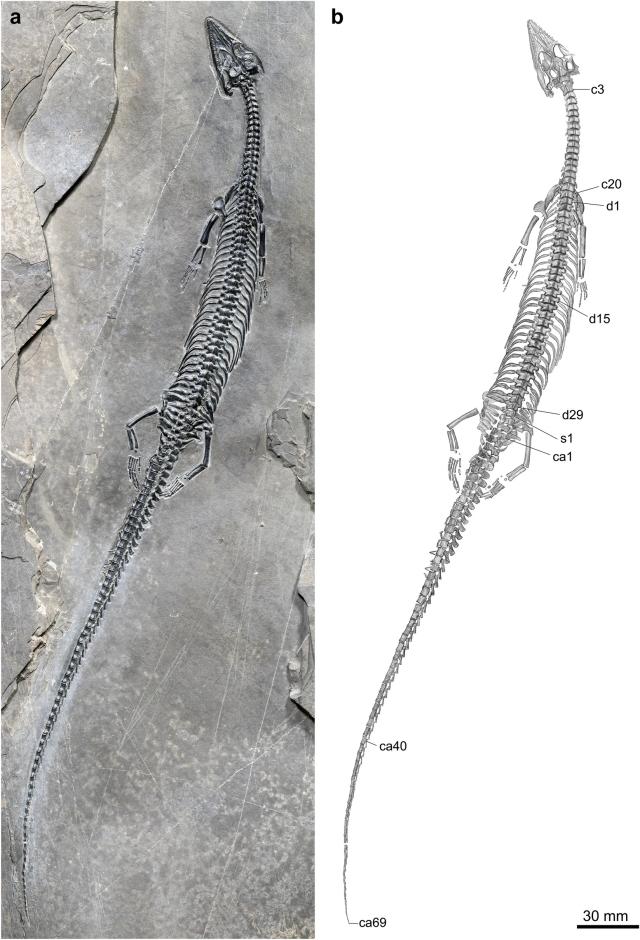
An article published in the journal “Scientific Reports” describes the identification of a new species of marine reptile with an exceptionally long tail that lived about 244 million years ago, in the Middle Triassic period, in today’s China. A team of researchers named it Honghesaurus longicaudalis after examining a complete skeleton discovered in the Guanling Formation in China’s Yunnan province. This reptile is part of the now-extinct group of pachypleurosaurs and was quite large among them, with a long trunk and tail that probably gave it swimming maneuverability and efficiency.
Pachypleurosaurs (Pachypleurosauria) lived in the Middle Triassic and had a lizard-like appearance despite being aquatic reptiles. Fossils attributed to this group have been found both in Europe and Asia, and this has contributed to discussions on their origins, their diffusion, and kinships with other groups of reptiles. For this reason, the classification of this and other groups has changed over time and is still a subject of discussion. For this reason, different sources indicate pachypleurosaurs as an order, suborder, or otherwise in the taxonomic classification. Several species have been attributed to this group over the years showing even more that for a time, pachypleurosaurs were quite successful.
In 2021, a fossil skeleton of a reptile was found in the Guanling Formation with characteristics close to those of previously known pachypleurosaurs, which had an elongated body and tail. The new fossil showed a tail that was very long even by the standards of this group of reptiles which made it larger than most of the other species that belong to it with a length of about 47 centimeters. That tail is made up of 69 caudal vertebrae out of a total of 121 vertebrae.
The tail and other anatomical features are different from those of other known pachypleurosaurs such as the pointed snout. This convinced the researchers to create a new genus for the species they named Honghesaurus longicaudalis. The image (Courtesy Xu et al.) shows the skeleton and a drawing of the specimen.
According to the researchers, Honghesaurus longicaudalis used a lateral undulatory swimming technique. Probably, the length of the trunk and especially of the tail were useful for maneuvering during swimming also making it energy-efficient.
In the Middle Triassic period, almost all of the mainland was united in Pangea, which was surrounded by a single ocean called Panthalassa. A part of that ocean, called Tethys, occupied an equatorial area with present-day Eurasia to the north and Africa to the south. In Tethys, pachypleurosaurs spread, and there they probably fed on small marine animals, both fish and invertebrates.
The discovery of a truly peculiar species such as Honghesaurus longicaudalis not only arouses curiosity for its exceptionally long tail but is also useful for paleontologists. Other similar pachypleurosaurs were discovered in different areas of today’s China and each new discovery helps in reconstructing the history of this group of reptiles. They don’t arouse an interest similar to the large dinosaurs among the general public but they show the influence that the formation and subsequent fragmentation of Pangea had on Triassic life forms.

